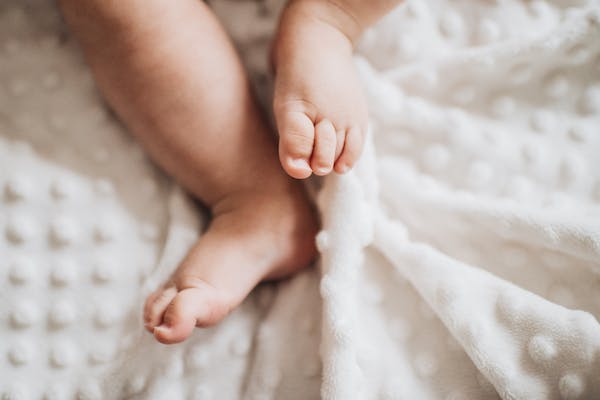LIFE WITH URBAN KIDDIES
Tips for Choosing the Right Baby Shoes
Introduction
Choosing the right shoes for your baby is essential for their comfort, development, and overall well-being. Baby shoes play a crucial role in protecting their delicate feet while aiding in their early stages of walking. With numerous options available in the market, it can be overwhelming for parents to make the best choice. This blog provides valuable tips to help you select the right shoes for your baby, ensuring their feet are supported, comfortable, and healthy during this critical period of their growth.
Choosing the Proper Softsole Shoes
When it comes to caring for little ones every detail counts. Choosing the correct shoes for our newborns is an important element of infant care. While babies do not need shoes until they can walk, choosing the right footwear is critical to supporting their developing feet and promoting healthy growth. In this post, we’ll look at the importance of newborn shoes, what to look for when buying them, and how they affect your child’s general well-being.
Choosing the appropriate shoes for your infant is a big decision. You want to assure your child’s comfort, support, and general growth as they begin to explore the world on their own. Here are some pointers to consider when selecting newborn shoes.
Tips for Choosing the Proper Softsole Shoes
Prioritize comfort and flexibility
Regarding baby shoes, comfort, and flexibility should be at the top of your priority list. Babies feet are soft and flexible, and they require shoes that mimic the barefoot experience as closely as possible. Look for shoes made from breathable materials like soft leather or mesh that allow air circulation and prevent sweat build-up. Ensure that the shoes have ample room in the toe area, allowing the baby’s toes to wiggle freely.The importance of comfortable shoes extends beyond the immediate benefits. By prioritizing comfort from an early age, parents set the foundation for good foot health in the long run. Comfortable newborn shoes reduce the risk of developing foot conditions like flat feet, plantar fasciitis, or bunions later in life. Promoting proper foot alignment and comfort during the early stages helps establish healthy habits and prevents potential foot issues in the future.

Choosing the right size
Choosing the correct shoe size is crucial for your baby’s foot health. Ill-fitting shoes can hinder proper foot development and cause discomfort. Measure your baby’s feet regularly, as their size can change rapidly during their early years. When selecting shoes, leave space (about half an inch) between the longest toe and the front of the shoe to accommodate growth. Avoid buying shoes that are too big, as they can cause tripping and instability. Selecting the right size in baby shoes is not only beneficial for immediate comfort but also for long-term use. Babies grow rapidly, and their feet can outgrow shoes within a short period. Investing in newborn shoes that fit correctly ensures that they last longer, reducing the need for frequent replacements. On the other hand, shoes that are too loose can cause friction and rubbing, resulting in discomfort and blisters.
Check for proper support
Supportive shoes are vital for your baby’s developing feet. Look for shoes that have a firm heel counter (the back part of the shoe that holds the heel in place) to provide stability and prevent excessive pronation or supination. The shoes should have a flexible sole that bends easily with the baby’s foot. Avoid shoes with rigid soles that restrict natural movement. Babies spend a significant amount of time on their feet as they learn to crawl, stand, and walk. Shoes lacking proper support can lead to foot fatigue and discomfort. Supportive shoes provide cushioning and shock absorption, reducing the impact on the feet and minimizing fatigue. This ensures that babies can engage in various activities without experiencing unnecessary foot strain or discomfort.
Consider slip-on or Velcro closures
Babies are notoriously wriggly, and getting them to sit still for shoe fitting can be challenging. Opt for slip-on or Velcro closure shoes to make the process easier. These types of shoes provide a secure fit while allowing quick and hassle-free removal. Avoid shoes with laces or buckles that can be time-consuming and frustrating, especially when you’re in a rush.
Velcro closures offer the advantage of customizable fit for baby shoes. The straps can be adjusted to accommodate different foot widths and sizes, ensuring a snug and secure fit. This feature is particularly beneficial for babies with narrower or wider feet, as it allows for personalized adjustments to achieve optimal comfort and support.
Slip-on shoes, although not adjustable, provide flexibility and stretch to accommodate varying foot shapes.
Look for non-slip soles
Babies spend a significant amount of time exploring their environment, and they need shoes with non-slip soles to ensure their safety. Look for shoes with textured or rubber soles that provide good traction on different surfaces. This feature will help prevent slips and falls as your baby begins to take their first steps. Remember, it’s important to supervise your baby at all times, even when using non-slip products, as they may still encounter slippery surfaces or uneven terrain.
When babies start walking independently, non-slip soles become even more crucial. They provide the necessary support and traction for babies to maintain their balance and take confident steps.
Consider the season and climate
The weather and climate conditions should also be considered when choosing baby shoes. For warm weather, opt for lightweight and breathable shoes to prevent overheating and discomfort. In colder climates, choose shoes with insulation or lining to keep their feet warm.
Choosing shoes that are suitable for the current season and climate ensures optimal comfort for babies. During hot weather, breathable and lightweight shoes allow air circulation, preventing excessive sweating and discomfort. On the other hand, during colder seasons, shoes with insulation or lining provide warmth and protect babies’ feet from the cold. By considering the season and climate, parents can ensure that their babies’ feet remain at a comfortable temperature, reducing the risk of overheating or chilling.
Prioritize Quality and Durability
Invest in well-made shoes from reputable brands known for their quality. High-quality shoes are likely to last longer and provide better support for your baby’s feet. Check the stitching and construction of the shoes. They should be sturdy and well-secured to withstand your baby’s movements and play.
Investing in durable shoes means they will last longer. Babies grow quickly, but well-made shoes can withstand the wear and tear associated with their active lifestyles. Durable shoes can withstand repeated use, washing, and exposure to different weather conditions, making them a cost-effective choice in the long run. Well-made shoes prioritize safety by using non-toxic materials and adhering to safety standards.
Why is it important to Choose the Right Baby Walking Shoes?
Choosing the right newborn shoes is of utmost importance for several reasons. The early stages of walking are crucial for a baby’s development, and the shoes they wear play a significant role in ensuring the baby’s comfort, safety, and overall foot health.
Consulting with a pediatrician or a shoe specialist can offer additional guidance tailored to the baby’s unique needs. Taking the time and effort to choose the right newborn shoes is a small but significant investment in a baby’s well-being.

Benefits of Choosing the Right Baby Walking Shoes
Considering the season and climate when choosing newborn shoes offers numerous benefits, including enhanced comfort, protection from elements, adaptability to different surfaces, prevention of foot issues, and cost-effectiveness. Selecting shoes appropriate for the prevailing weather conditions ensures that babies’ feet remain comfortable, protected, and safe
Quality newborn shoes also have slip-resistant soles, reducing the risk of falls and providing better traction as your baby learns to walk or explore different surfaces. Non-slip soles reduce the likelihood of skidding or sliding, offering stability and preventing potential injuries.
This support is especially beneficial during the learning phase when babies are still mastering their coordination and muscle control. Looking for non-slip soles in newborn shoes is essential for promoting stability, reducing the risk of accidents, and ensuring the safety of little ones.
Conclusion
Choosing the right shoes for your baby is a vital decision that can impact their comfort and development. By prioritizing comfort and flexibility, selecting the right size, checking for proper support, considering slip-on or Velcro closures, opting for non-slip soles, and taking into account the season and climate, you can make an informed choice. Remember that each baby is unique, and what works for one may not work for another. Always observe your baby’s comfort and behavior when trying out new shoes. With careful consideration and these tips, you can provide your little one with the best footwear for their growing feet.
Remember, in the early stages, babies don’t necessarily need shoes all the time. Allow them to spend time barefoot or in socks to promote natural foot movement and muscle development. When choosing shoes, prioritize comfort, flexibility, and safety to support your baby’s growing feet as they embark on their walking journey.
Table of Contents
Related Blogs
LOCATIONS
-
24B Fredrika Road,
Colombo 06,
00600
Sri Lanka
+94 77 700 3183
+94 76 014 3277
-
180B, Barracks Road,
Mount wellington
Auckland 1060,
New Zealand
+64 27 232 9289
-
8 Lauraville Avenue,
Werribee, Melbourne,
Victoria, 3030
Australia
+61 402 033 932
-
26 Smales drive,
Ajax,
Ontario, L1Z 1G5
Canada
+1 (647) 889-2146

